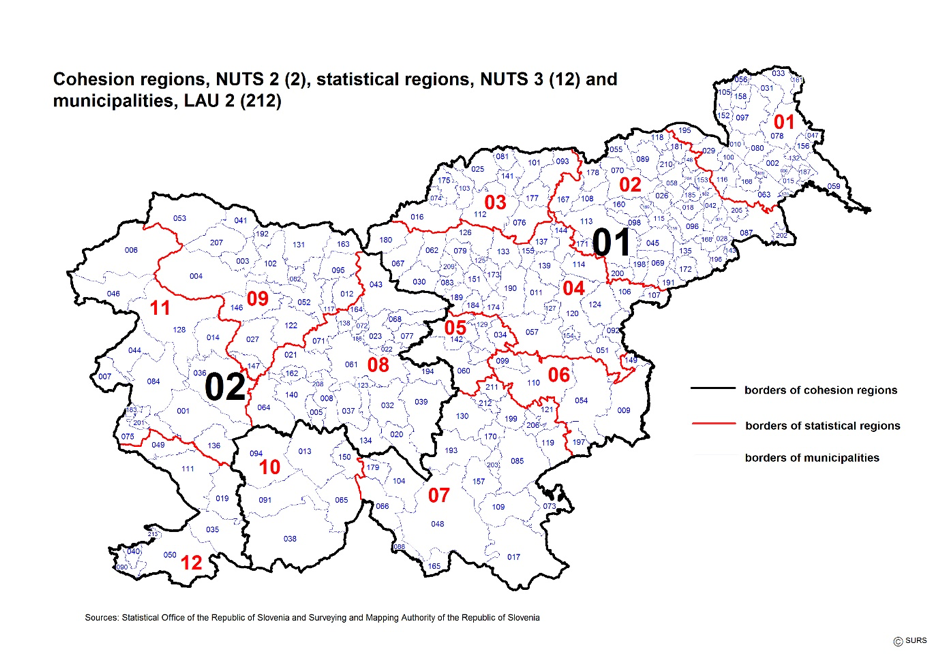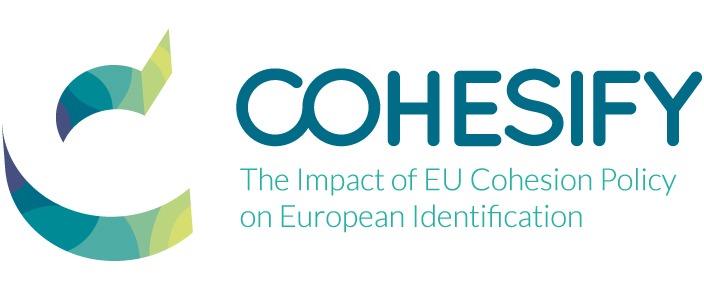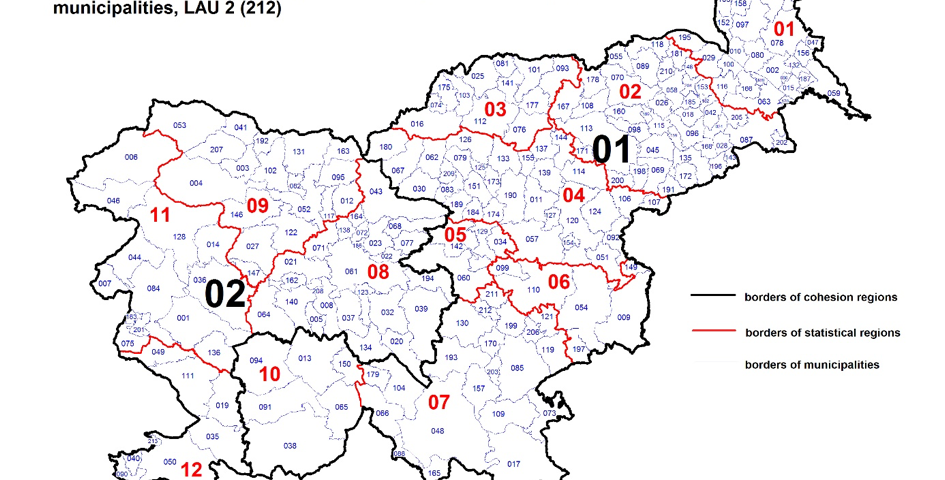
What’s the future of cohesion policy post 2020? The view of young scholars
October 25, 2017
From fake news to bots: impressions from this year’s Europcom
November 22, 2017What makes Cohesion policy in Slovenia specific is the fact that regions as administrative or political units do not exist.
While the question of whether a country of 2 million people needs regions at all is the source of endless political debates, their absence has had specific implications for the implementation of the Cohesion policy.
In the programme periods 2004-2006 and 2007-2013 Slovenia was treated as a single cohesion region (NUTS-II) eligible for support under objective 1 – convergence. Since in 2008 due to its fast growth Slovenia already came close to the 90% of the EU’s GDP per capita, authorities started to plan division of Slovenia into smaller units based on their development levels which would, based on convergence criteria (GDP levels relative to the average EU GDP) enable to continue to draw on the EU support. Moreover, according to the Statistical office, the years of fast growth contributed to increasing disparities between different parts of the country thus raising the question of whether the Cohesion policy should be implemented by taking into account these growing regional disparities
The centre-right government coalition, which was in power between 2004 and2008 wanted to introduce regions as political and administrative units to which certain task and powers would be transferred. At the time, political powers in Slovenia were divided between central government and over 200 municipalities (NUTS-V) the number of which was increasing, resulting in fragmentation of regional planning. However, the question of creating regions gained political connotations since the centre-right parties were traditionally stronger at the local level. The elections of 2008, which brought a centre-left coalition to power, and the economic consequences of the financial crisis postponed regionalization to an indefinite point in the future.
There were certain elements in the programming 2007-2013 period that tried to facilitate regional projects such as the regional development agencies corresponding to 12 statistical regions (NUTS-III) and cooperation between municipalities in allocating funds under the €600 million regional development mechanism funded by the European Regional Development Fund. In practice, however, the trend of capture by municipalities and localization of regional development projects was strong.
For the new programming period 2014-2020, Slovenia was divided into two cohesion regions (NUTS-II): a more developed Western Slovenia and a less developed Eastern Slovenia. During the crisis, the convergence gap between the two regions was actually reduced (Eastern Slovenia went from 67 to 70% of Western Slovenia’s GDP per capita) due to larger negative effects of the crisis in Western Slovenia which was more integrated into European markets. Each of the regions was earmarked its allocation quota from the European Regional Development Fund and the European Structural Fund while the Cohesion Fund applied to the country as a whole. In order to place the cohesion regions in an institutional structure and give them voice, Development Councils of the two regions were established, gaining their seats in the Monitoring committee.
In the programme periods 2004-2006 and 2007-2013 Slovenia was treated as a single cohesion region (NUTS-II) eligible for support under objective 1 – convergence. Since in 2008 due to its fast growth Slovenia already came close to the 90% of the EU’s GDP per capita, authorities started to plan division of Slovenia into smaller units based on their development levels which would, based on convergence criteria (GDP levels relative to the average EU GDP) enable to continue to draw on the EU support. Moreover, according to the Statistical office, the years of fast growth contributed to increasing disparities between different parts of the country thus raising the question of whether the Cohesion policy should be implemented by taking into account these growing regional disparities
The centre-right government coalition, which was in power between 2004 and2008 wanted to introduce regions as political and administrative units to which certain task and powers would be transferred. At the time, political powers in Slovenia were divided between central government and over 200 municipalities (NUTS-V) the number of which was increasing, resulting in fragmentation of regional planning. However, the question of creating regions gained political connotations since the centre-right parties were traditionally stronger at the local level. The elections of 2008, which brought a centre-left coalition to power, and the economic consequences of the financial crisis postponed regionalization to an indefinite point in the future.
There were certain elements in the programming 2007-2013 period that tried to facilitate regional projects such as the regional development agencies corresponding to 12 statistical regions (NUTS-III) and cooperation between municipalities in allocating funds under the €600 million regional development mechanism funded by the European Regional Development Fund. In practice, however, the trend of capture by municipalities and localization of regional development projects was strong.
For the new programming period 2014-2020, Slovenia was divided into two cohesion regions (NUTS-II): a more developed Western Slovenia and a less developed Eastern Slovenia. During the crisis, the convergence gap between the two regions was actually reduced (Eastern Slovenia went from 67 to 70% of Western Slovenia’s GDP per capita) due to larger negative effects of the crisis in Western Slovenia which was more integrated into European markets. Each of the regions was earmarked its allocation quota from the European Regional Development Fund and the European Structural Fund while the Cohesion Fund applied to the country as a whole. In order to place the cohesion regions in an institutional structure and give them voice, Development Councils of the two regions were established, gaining their seats in the Monitoring committee.
The problem with the cohesion regions, however, was that the division was artificial and statistical, as can be seen on the map below. Moreover, since the regional development mechanism, which was used in the 2007-2013 period to finance a number of bottom-up projects on the local level, was no longer present in the new programme, local authorities argued that the regional policy was centralized. With the centre-left government introducing cuts to the funding of the local communities due to the crisis, the issue soon gained political dimensions.
The government gave cohesion regions some personnel to increase their administrative capacity and in the context of the recent mid-term changes to the operational programme promised to increase funds for the regional/local projects. The conditionality of joint regional applications for the projects was also giving some results. However, the broader questions of having regions as functional units to facilitate the regional development remains.

The government gave cohesion regions some personnel to increase their administrative capacity and in the context of the recent mid-term changes to the operational programme promised to increase funds for the regional/local projects. The conditionality of joint regional applications for the projects was also giving some results. However, the broader questions of having regions as functional units to facilitate the regional development remains.

Marko Lovec COHESIFY Research Fellow at Central European University Center for Policy Studies

